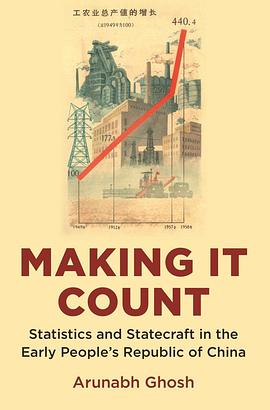Making It Count
Douban
Statistics and Statecraft in the Early People's Republic of China
Arunabh Ghosh
résumé
In 1949, at the end of a long period of wars, one of the biggest challenges facing leaders of the new People’s Republic of China was how much they did not know. The government of one of the world’s largest nations was committed to fundamentally reengineering its society and economy via socialist planning while having almost no reliable statistical data about their own country. Making It Count is the history of efforts to resolve this “crisis in counting.” Drawing on a wealth of sources culled from China, India, and the United States, Arunabh Ghosh explores the choices made by political leaders, statisticians, academics, statistical workers, and even literary figures in attempts to know the nation through numbers.
Ghosh shows that early reliance on Soviet-inspired methods of exhaustive enumeration became increasingly untenable in China by the mid-1950s. Unprecedented and unexpected exchanges with Indian statisticians followed, as the Chinese sought to learn about the then-exciting new technology of random sampling. These developments were overtaken by the tumult of the Great Leap Forward (1958–61), when probabilistic and exhaustive methods were rejected and statistics was refashioned into an ethnographic enterprise. By acknowledging Soviet and Indian influences, Ghosh not only revises existing models of Cold War science but also globalizes wider developments in the history of statistics and data.
Anchored in debates about statistics and its relationship to state building, Making It Count offers fresh perspectives on China’s transition to socialism.
contents
Illustrations and Tables
Abbreviations
Acknowledgements
1 Introduction
PART I. A Statistical Revolution
2 A New Type of Standardized Statistical Work
3 Ascertaining Social Fact
4 No “Mean” Solution: Reformulating Statistics, Disciplining Scientists
PART II. Seeing Like a Socialist State
5 The Nature of Statistical Work
6 To “Ardently Love Our Statistical Work”: State (In)Capacity, Professionalization, and their Discontents
PART III. Alternatives
7 Seeking Common Ground Amidst Differences: The Turn to India
8 A “Great Leap” in Statistics
Conclusion
Chinese Character Glossary
Bibliography
Index